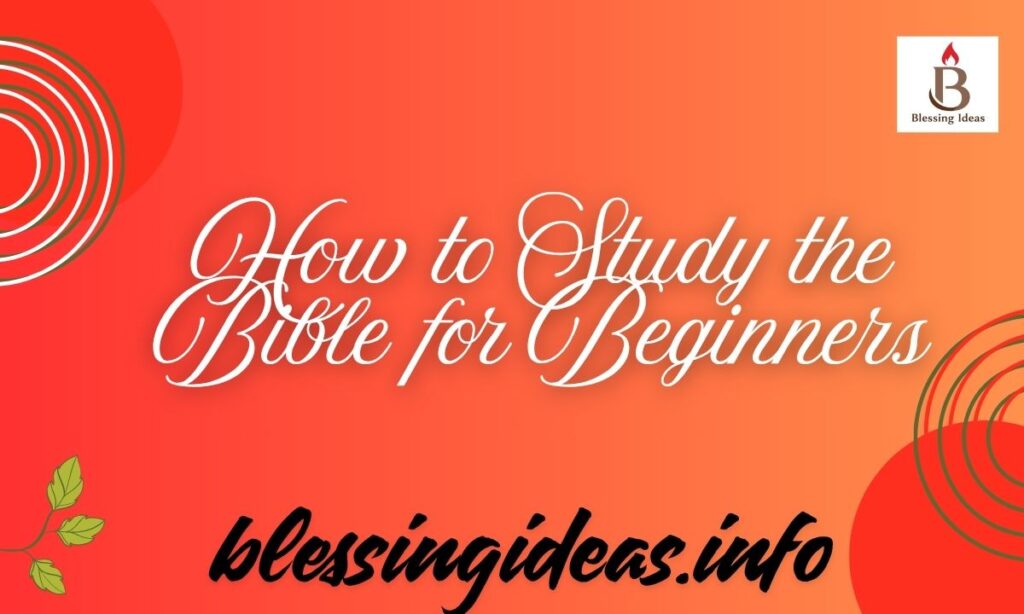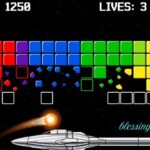Studying the Bible as a beginner can feel like stepping into a vast, sacred library filled with ancient wisdom, divine truths, and transformative power. For those new to this journey, the process may seem daunting due to the Bible’s depth, historical context, and spiritual significance. However, with the right approach, tools, and mindset, anyone can unlock its treasures and grow closer to God.
The key to effective Bible study lies in preparation, intentionality, and a heart open to learning. Whether you’re exploring Scripture for the first time or seeking to deepen a lifelong faith, starting with simple practices—like gathering the right materials, praying for guidance, and reflecting on God’s Word—can transform your experience.
1. Gather Your Bible Study Materials
Amanda’s guide recommends a study Bible, prayer journal, trusted commentary, and a Bible reading plan. Here’s additional information and alternative tools to enrich your preparation:
- A Study Bible: Beyond Amanda’s recommendations (CSB, NIV, ESV), consider the NKJV Study Bible for its detailed notes or the Life Application Study Bible (available in multiple translations) for practical life applications. For beginners, the NLT Study Bible uses clear, accessible language. Digital options like YouVersion or Bible Gateway offer free study Bible notes online, with features like audio versions for those who prefer listening. Tip: If purchasing a physical study Bible, check for one with wide margins for note-taking, which can double as a journal.
- A Prayer Journal or Notebook and Writing Utensils: Instead of a traditional notebook, try a digital tool like Notion or Evernote for searchable notes, especially if you want to organize insights by theme or book. For creative learners, bullet journaling can make the process engaging—use stickers, washi tape, or sketches to mark prayers or key verses. Apps like Echo Prayer can track prayer requests inspired by your study. Tip: Create a color-coding system (e.g., blue for promises, red for commands) to visually organize notes, as suggested by the Inductive Bible Study method.
- A Trusted Commentary: In addition to the Blue Letter Bible app, explore Enduring Word (free online commentary with verse-by-verse insights) or Bible Hub, which aggregates multiple commentaries for comparison. For physical copies, Matthew Henry’s Concise Commentary is beginner-friendly and widely available. If your church doesn’t lend commentaries, libraries or used bookstores often have affordable options. Tip: Start with one commentary to avoid overwhelm, and cross-check with your pastor or study group for reliability.
- A Bible Reading Plan: Beyond Amanda’s suggestions, try thematic plans like The Bible Project’s reading plans, which pair Scripture with animated videos explaining context (available on their app or website). For a shorter commitment, She Reads Truth offers beginner-friendly plans with devotional content, ideal for women. Alternatively, the SOAP method (Scripture, Observation, Application, Prayer) provides a structured daily plan without requiring a full book-by-book approach. Tip: Use a habit-tracking app like Habitica to stay consistent with your reading plan, turning Bible study into a daily routine.
Additional Resource Connection: For “Want to Spend More Time in God’s Word,” consider joining an online community like Bible Study Fellowship (BSF), which offers structured plans and discussion groups, or explore RightNow Media for video-based study plans tailored for beginners.
2. Begin Your Bible Study with Prayer
Amanda emphasizes starting with prayer, using Psalm 119:18 as an example. Here are alternative approaches and insights:
- Alternative Prayers: In addition to Psalm 119:18, pray John 16:13 (“But when he, the Spirit of truth, comes, he will guide you into all the truth”) to invite the Holy Spirit’s guidance. You can also use a simple prayer like, “God, reveal Yourself to me through Your Word today.”
- Structured Prayer Methods: Try the ACTS method (Adoration, Confession, Thanksgiving, Supplication) before studying to center your heart. For example, adore God for His wisdom, confess distractions, thank Him for His Word, and ask for clarity.
- Mindfulness in Prayer: To address distractions, practice a brief moment of silence or deep breathing before praying to focus your mind, as recommended by some Christian mindfulness resources. Tip: Keep a small card with your favorite prayer verse in your Bible to recite each time you begin.
Additional Resource Connection: For “Fall in Love with God’s Word,” praying for a heart that delights in Scripture (Psalm 1:2) can deepen your emotional connection to Bible study, making it a joyful habit rather than a task.
3. Read the Text Slowly and Look for Key Words
Amanda advises slow reading and identifying key words. Here’s how to expand this practice:
- Inductive Bible Study Method: This method formalizes Amanda’s advice by encouraging three steps: Observation (noticing keywords, repetition, or structure), Interpretation (understanding meaning), and Application (applying to life). Use a printable Inductive Study worksheet from sites like Precept Ministries to guide you.
- Keyword Tools: Apps like Logos Bible Software (free basic version) highlight keywords and their original Hebrew/Greek meanings, adding depth without requiring language skills. Alternatively, use a concordance (available on Bible Hub) to trace keywords across Scripture.
- Visual Mapping: Create a mind map of keywords and themes in your notebook or on a digital tool like MindMeister. For example, in John 1, map words like “light,” “Word,” and “life” to see connections. Tip: Read the passage in multiple translations (e.g., NIV for clarity, ESV for accuracy) using Bible Gateway to spot different keyword emphases.
4. Look for Cross References
Amanda highlights cross references for deeper understanding. Here are additional ways to use them:
- Digital Cross-Reference Tools: The Blue Letter Bible app or Bible Hub provides clickable cross references, showing related verses instantly. This is faster than flipping through a physical Bible.
- Thematic Cross References: Use a topical Bible (e.g., Nave’s Topical Bible, available online) to find verses on specific themes (e.g., grace, faith) linked to your passage. This expands Amanda’s suggestion to explore broader biblical concepts.
- Chain Reference Systems: Some Bibles, like the Thompson Chain-Reference Bible, organize cross references by topic, guiding you through related verses systematically. Tip: Write down one cross-referenced verse per study session in your journal to compare with the main passage, noting similarities or new insights.
5. Consider the Context of Scripture
Amanda stresses context to avoid misinterpretation. Here’s how to deepen this practice:
- Historical and Cultural Context: Use The Bible Project’s book overview videos or podcasts to understand the historical setting and audience of each book. For example, knowing that Philippians was written from prison adds depth to Paul’s joy-focused message.
- Literary Context: Identify the genre (narrative, poetry, prophecy, epistle) to interpret correctly. For instance, Psalms uses poetic imagery, while Leviticus focuses on laws. Study Bibles often note the genre in introductions.
- Context Questions: In addition to Amanda’s questions, ask, “What problem or need was the author addressing?” This helps clarify the passage’s purpose. Tip: Create a one-page “context cheat sheet” for each book you study, summarizing its author, date, audience, and purpose, using study Bible notes or online resources like GotQuestions.org.
6. Reflect on What You Read in Your Bible Study

Amanda encourages reflecting on God’s character and personal application. Here are additional reflection strategies:
- Journaling Prompts: Beyond Amanda’s questions, try prompts like, “How does this passage show God’s love, justice, or mercy?” or “What emotions does this passage stir in me?” These align with “Fall in Love with God’s Word” by fostering an emotional connection.
- Lectio Divina: This ancient practice involves reading (lectio), meditating (meditatio), praying (oratio), and contemplating (contemplatio) a short passage. It’s ideal for beginners seeking a reflective, prayerful approach.
- Group Reflection: Share reflections in a small group or online forum (e.g., YouVersion’s community feature) to gain new perspectives, aligning with Amanda’s church study suggestion. Tip: End each session by writing one sentence summarizing what you learned about God, reinforcing Amanda’s God-centered focus.
7. Apply What You Learn
Amanda emphasizes action and transformation. Here are additional ways to apply Scripture:
- Practical Application Frameworks: Use the SPECK method (Sin to confess, Promise to claim, Example to follow, Command to obey, Knowledge to gain) to identify actionable steps. For example, in Matthew 5:16, a command to obey is letting your light shine through good deeds.
- Accountability Partners: Share your application goals with a friend or study group member to stay accountable, aligning with “Follow God’s Will” by actively living out Scripture.
- Daily Reminders: Set phone reminders with key verses or applications (e.g., “Be kind today—Ephesians 4:32”) using apps like Verse of the Day. Tip: Start with one small, specific application per week (e.g., “I’ll forgive someone this week based on Colossians 3:13”) to build confidence.
Additional Resource Connection: For “Follow God’s Will,” explore resources like The Purpose Driven Life by Rick Warren (available in study formats) to connect Bible study with discerning God’s broader plan for your life.
Additional Resources for Beginners
Amanda lists resources like “Where to Start Reading the Bible for Beginners” and others. Here’s how to approach these and similar resources:
- Where to Start Reading the Bible for Beginners: Start with shorter books like Ruth or James for manageable narratives or practical advice. Crossway.org offers a free “5-Day Bible Reading Plan” for beginners.
- Bible Verses Every Woman Should Memorize: Focus on verses like Proverbs 31:25 (strength and dignity) or Psalm 46:5 (God is within her) for encouragement. Use apps like Fighter Verses to memorize one verse weekly.
- Best Bible Studies for Women: How to Empower Your Faith: Try Seamless by Angie Smith for a beginner-friendly overview of the Bible’s big story or Discerning the Voice of God by Priscilla Shirer for practical application.
- How to Choose a Good Theological Bible Study for Women: Look for studies with clear doctrine, discussion guides, and reputable authors. Check Lifeway Women or The Gospel Coalition for vetted options. Tip: For “Fall in Love with God’s Word,” engage with creative resources like Doodle Through the Bible (illustrated devotionals) to make study fun and memorable.
Conclusion
Studying the Bible as a beginner is a rewarding journey that opens the door to knowing God more deeply and discovering His purpose for your life. By following practical steps like gathering study tools, praying for guidance, reading with intention, and applying Scripture’s truths, you can build a strong foundation for spiritual growth. Mistakes or moments of uncertainty are part of the process, so approach your study with patience, consistency, and an open heart, trusting that God will reveal His wisdom as you seek Him through His Word.
As you continue, let the Bible become a source of joy, transformation, and connection with God. Resources like study Bibles, reading plans, and community groups can support your growth, while practices like reflection and application will make Scripture a living part of your daily life. Embrace this adventure with confidence, knowing that each step you take—however small—draws you closer to God’s heart and equips you to live out His will with purpose and love.






